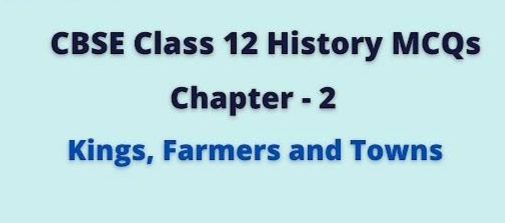🟩 3 Marks Important Questions and Answers
Q1. What is a ‘Prashasti’? Give one example.
Answer:
- Prashasti means “in praise of” – these are inscriptions that praise the achievements of kings.
- Usually composed in Sanskrit by court poets.
- Example: The Allahabad Pillar inscription written by Harisena praises Samudragupta.
Q2. What are the main features of Ashoka’s Dhamma?
Answer:
- Religious tolerance – respect for all religions.
- Moral values – respect for elders and parents, compassion.
- Non-violence – against war and animal sacrifice.
- Appointment of Dhamma Mahamatras to spread Dhamma.
Q3. Who was a Gahapati? What were his duties?
Answer:
- Gahapati was the head of a household – he could be a farmer, artisan, or trader.
- Responsibilities:
- Managed land and agriculture.
- Supervised labor.
- Paid taxes and ensured production.
Q4. Mention any two features of Mauryan administration.
Answer:
- Centralized government – emperor held supreme power, ruling from Pataliputra.
- Well-structured administration – officials like Amatya (minister), Samaharta (revenue officer), Nagaraka (city head) managed different functions.
Q5. Write any three features of Ashokan inscriptions.
Answer:
- Written in Prakrit language, usually in Brahmi or Kharosthi script.
- Engraved on rocks and pillars.
- Spread messages of Dhamma, morality, and good governance.
Q6. What were the effects of land grants in ancient India?
Answer:
- Increased power of Brahmins and temples.
- Villagers came under private control of donees.
- Growth of Vishti – forced labor system for revenue and land management.
Q7. Write any three features of Punch-marked coins.
Answer:
- Made of silver or copper.
- No names of kings – only symbols like trees, sun, animals.
- Issued by merchants or local authorities – used in trade.
Q8. What was a Shreni? What was its role?
Answer:
- Shreni was a guild or association of traders or artisans.
- Role:
- Protected members’ interests.
- Controlled production and trade.
- Engaged in charitable activities.
Q9. Mention any three causes for the decline of the Mauryan Empire.
Answer:
- Difficult to manage such a vast empire.
- Weak successors after Ashoka.
- Emphasis on Dhamma weakened military strength.
Q10. Who deciphered Brahmi script? What was its significance?
Answer:
- James Prinsep deciphered the Brahmi script in 1837.
- Significance:
- Helped in reading Ashokan inscriptions.
- Gave insight into ancient administration and society.
- Laid the foundation for modern Indian historiography.
🟦 8 Marks Important Questions and Answers – English
Q1. Describe the features of Mauryan administration.
Answer:
The Mauryan Empire (321 BCE – 185 BCE) had a centralized and organized administrative system, explained in Arthashastra, Indica by Megasthenes, and Ashokan inscriptions.
🔹 Key Features:
- Central authority – Emperor held all power: judicial, financial, military.
- Administrative divisions – Divided into provinces governed by princes or officials.
- Key officials:
- Amatya: Minister
- Samaharta: Revenue officer
- Nagaraka: City head
- Dhamma Mahamatras: Officers for promoting ethics
- Well-structured military – Infantry, cavalry, elephants, chariots.
- Espionage system – Spies ensured loyalty and order.
- Tax system – 1/6th of produce as ‘Bhaga’ tax.
- Ethical administration under Ashoka – Dhamma-based governance.
📌 Conclusion: Mauryan administration was the first structured and centralized empire in India, managing vast territories efficiently.
Q2. Explain Ashoka’s Dhamma – features, aims, and impact.
Answer:
🔹 Features of Dhamma:
- Respect for all religions.
- Non-violence and compassion toward all beings.
- Family and social duties – respect for elders, parents, teachers.
- Appointment of Dhamma Mahamatras.
- Public welfare – building roads, wells, hospitals.
🔹 Aims:
- Promote unity and peace in the diverse empire.
- Reduce violence and hatred post-Kalinga war.
🔹 Impact:
- Increased ethical awareness in society.
- Helped Ashoka become known as India’s first welfare ruler.
📌 Conclusion: Ashoka’s Dhamma was a unique moral and social code, not a religion, which deeply influenced governance and society.
Q3. What is the land grant system? What were its effects on society and administration?
Answer:
🔹 Land Grant System:
- Kings donated land to Brahmins, temples, officials.
- Grants were recorded on copper plates or stone inscriptions.
- Donees got rights over taxes and labor (Vishti).
🔹 Effects on Society:
- Increased Brahminical power.
- Villagers came under the control of grant recipients.
- Growth of forced labor (Vishti).
🔹 Effects on Administration:
- Reduced direct control of kings.
- Promoted localized governance.
- Religious institutions gained economic power.
📌 Conclusion: The land grant system reshaped power relations in ancient India and contributed to rural feudalism.
Q4. Explain the process of urbanization in ancient India with examples.
Answer:
🔹 Urbanization (600 BCE – 600 CE) was driven by agriculture, trade, and administration.
🔹 Evidence and Features:
- Cities developed like Pataliputra, Mathura, Ujjain, Taxila.
- Well-planned urban centers – roads, drainage, markets, fort walls.
- Rise of artisan guilds (Shrenis) – controlled production and trade.
- Use of coinage (punch-marked, gold coins) promoted commerce.
- Ports like Arikamedu, Tamralipti enabled foreign trade.
- Literary evidence: Sangam texts describe cities, merchants, and trade.
📌 Conclusion: Urbanization in early India was a multi-dimensional process, influenced by state control, surplus agriculture, and vibrant trade networks.







